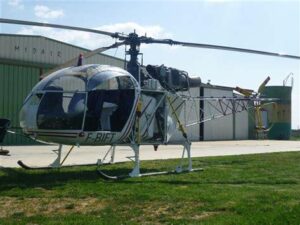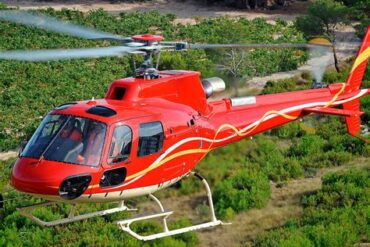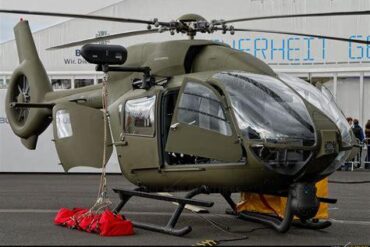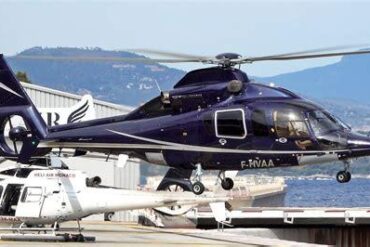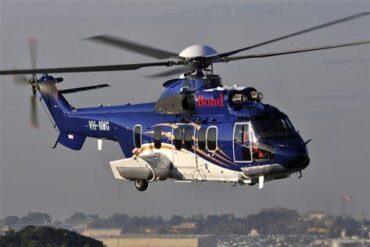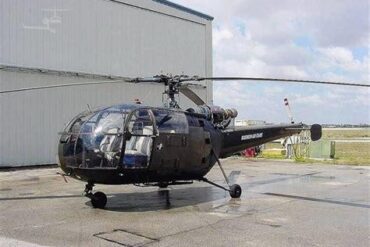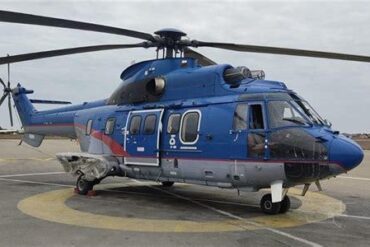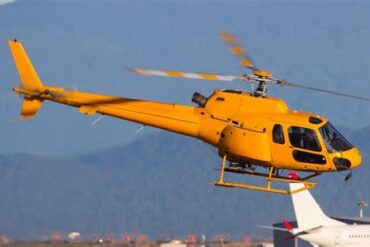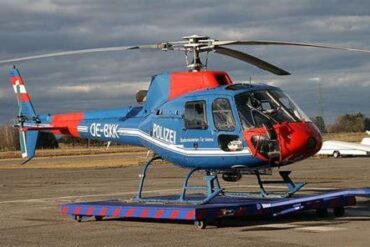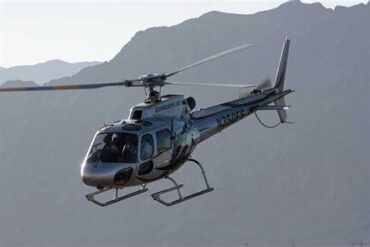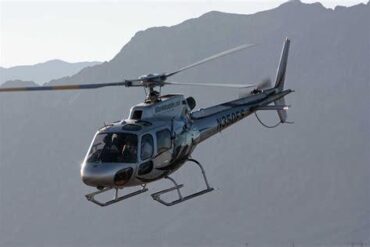Overview of the Airbus/Eurocopter AS/SA 315B
The Airbus/Eurocopter AS/SA 315B is a highly reliable and versatile light helicopter, often praised for its remarkable performance in various challenging environments. Originally developed as a utility helicopter, this aircraft has a long-standing reputation in both civil and military aviation sectors. It is particularly well-known for its Alouette III lineage, a design that has proven itself in diverse operational roles across the globe.
The SA 315B is distinguished by its Artouste IIIB turboshaft engine, which delivers impressive power-to-weight ratios, making it ideal for high-altitude missions. The aircraft’s design features include a three-blade main rotor and a simple yet effective fuselage structure, ensuring ease of maintenance and operational efficiency. Its utility is further enhanced by the capability to carry up to six passengers or a substantial payload, depending on the configuration.
Initial Acquisition Costs
When considering the price of an Airbus/Eurocopter AS/SA 315B, several factors come into play. As of the latest market data, a new AS/SA 315B typically starts at around $1.5 million. However, this figure can vary significantly based on customization, optional equipment, and the inclusion of advanced avionics. Pre-owned models offer a more affordable alternative, with prices ranging between $800,000 and $1.2 million, depending on the aircraft’s age, condition, and operational history.
The acquisition of a new helicopter usually comes with a comprehensive warranty, covering major components like the engine, transmission, and avionics systems. This warranty can be a significant advantage, offering peace of mind during the initial years of operation. Buyers should also consider associated costs such as insurance, registration, and sales taxes, which can add a substantial amount to the overall purchase price.
Operating Costs Breakdown
Operating an Airbus/Eurocopter AS/SA 315B involves several ongoing expenses that owners must account for to maintain safe and efficient operations. These costs can be broadly categorized into fixed costs and variable costs.
1. Fixed Costs
Fixed costs remain relatively consistent regardless of how much the helicopter is flown. The primary fixed costs include:
-
Hangar Fees: Depending on the location, hangar fees can range from $500 to $2,000 per month.
-
Insurance: Comprehensive insurance coverage is essential and typically costs between $20,000 and $40,000 annually, depending on factors such as pilot experience, coverage limits, and operational usage.
-
Depreciation: Aircraft depreciation is another fixed cost, with the AS/SA 315B expected to depreciate at an average rate of 5-10% annually.
-
Financing Costs: If the helicopter is financed, the interest on the loan must be factored into the annual budget. Interest rates generally range from 4% to 6%, depending on the terms and the borrower’s credit profile.
2. Variable Costs
Variable costs fluctuate based on the number of flight hours and the operational environment. The main variable costs for the AS/SA 315B include:
-
Fuel: The Artouste IIIB engine consumes approximately 120 liters of Jet-A1 fuel per hour, with fuel costs averaging $3 to $5 per liter depending on the region. This translates to an hourly fuel cost of approximately $360 to $600.
-
Maintenance: Regular maintenance is crucial for the safe operation of the helicopter. Routine inspections, engine overhauls, and component replacements can cost between $300 and $500 per flight hour. The Time Between Overhaul (TBO) for the engine is generally around 1,800 hours, with major overhauls costing up to $250,000.
-
Crew Costs: Operating the AS/SA 315B typically requires at least one experienced pilot, with salaries ranging from $70,000 to $120,000 annually, depending on the pilot’s experience and the operational demands.
Additional Operational Considerations
Maintenance Reserves
To ensure that sufficient funds are available for major overhauls and unexpected repairs, many operators set aside maintenance reserves. A typical reserve amount is $200 per flight hour, which helps cover the cost of engine overhauls, avionics updates, and airframe repairs. This practice is particularly important for operators who rely on consistent and uninterrupted service from their helicopters.
Regulatory Compliance
Operating a helicopter like the Airbus/Eurocopter AS/SA 315B requires strict adherence to aviation regulations set by bodies such as the Federal Aviation Administration (FAA) in the United States or the European Union Aviation Safety Agency (EASA) in Europe. These regulations cover everything from airworthiness standards to pilot certifications and operational limitations.
Compliance with these regulations often involves additional costs, such as fees for periodic inspections, certifications, and training programs for both pilots and maintenance personnel. Failure to comply can result in significant fines or, worse, the grounding of the aircraft.
Insurance Considerations
Given the potential risks associated with helicopter operations, insurance is a critical aspect of owning and operating the AS/SA 315B. Comprehensive coverage typically includes hull insurance, liability insurance, and passenger insurance. The cost of insurance varies based on the value of the aircraft, the operational environment, and the pilot’s experience.
-
Hull Insurance: Covers the cost of repairing or replacing the helicopter in the event of damage or total loss. Annual premiums range from 2% to 4% of the aircraft’s insured value.
-
Liability Insurance: Provides coverage for third-party claims arising from accidents. Premiums vary widely, but a standard liability policy might cost between $10,000 and $25,000 annually.
-
Passenger Insurance: Required if the helicopter is used for commercial purposes or carries non-crew members. Costs typically depend on the number of passengers and the nature of the operations.
Cost-Saving Strategies
Pre-Owned Aircraft
Purchasing a pre-owned AS/SA 315B is a popular cost-saving strategy, particularly for operators who do not require the latest avionics or modifications. Pre-owned helicopters often come at a fraction of the price of a new one, with many aircraft still offering years of reliable service.
However, it’s crucial to conduct a thorough pre-purchase inspection to assess the aircraft’s condition, verify maintenance records, and ensure compliance with all regulatory requirements. This inspection should be carried out by a qualified helicopter maintenance professional with experience in the AS/SA 315B model.
Leasing Options
For operators who prefer not to commit to full ownership, leasing an AS/SA 315B can be a viable alternative. Leasing offers the benefits of lower upfront costs, fixed monthly payments, and the flexibility to upgrade to a newer model at the end of the lease term.
Leasing agreements vary widely, with some offering full-service leases that include maintenance, insurance, and even crew services. However, operators should carefully review the lease terms to ensure that they understand any limitations, penalties, or additional costs associated with the agreement.
Fuel Management
Given that fuel represents a significant portion of the operating costs, implementing fuel management strategies can lead to substantial savings. This can include:
-
Negotiating bulk fuel purchase agreements with suppliers.
-
Utilizing fuel cards that offer discounts at specific locations.
-
Optimizing flight routes to minimize fuel consumption.
-
Regularly monitoring engine performance to ensure fuel efficiency.
Conclusion
The Airbus/Eurocopter AS/SA 315B remains a highly capable and versatile helicopter, well-suited for a variety of missions. However, potential owners and operators must carefully consider both the acquisition costs and the ongoing operating expenses to ensure that the aircraft meets their needs and budget. By understanding the full range of costs associated with the AS/SA 315B, operators can make informed decisions and implement effective strategies to manage these expenses, ultimately maximizing the value and utility of their investment.
